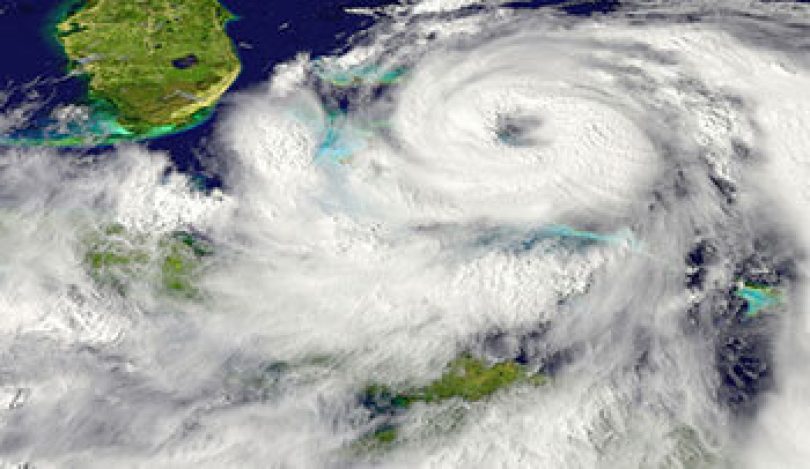There is a yawning gulf between perception and reality when it comes to managing a crisis. Make sure you can bridge the divide without complicated formulae.
The tail end of hurricane Gonzalo swept the extremities of the country earlier this month. It proved to be somewhat of a damp squib in most areas with London being caught out. One woman was killed by a falling tree. But overall the country was prepared. Regular updates from the BBC and the Met Office kept us in the know; Flights at the major airports were rescheduled or cancelled, fishing boats, ships and ferries either stayed far out at sea or remained in harbour and the structural damage was kept to a minimum. Thank you Michael Fish.
I think that’s fair… It’s a long time ago now since those terrible gales of 1987 took Britain by storm – literally. We all went to bed with the reassuring words of the country’s most respected weatherman ringing in our ears only to hear alarm bells in the middle of the night.
Mr Fish was out of his depth when he dismissed the fears of a woman caller who said a storm was on its way… The rest is history. Perhaps the BBC should have employed that woman caller to read the weather.
This was all, of course, in the days before real time satellites, social media and even before the ‘internet’ was a word any of us had heard.
Here’s the point… we are getting better and better at predicting an impending disaster: advances in technology, analysis and plain old learning from our mistakes have all helped. Towards the end of the last century and into this new one a string of global crises has made us all more aware of how fragile we are and we have woken up: The collapse of the Lloyds insurance market, BSE, CJD, lead in petrol, subprime lending and the global financial meltdown. Just some examples of learning the hard way – but learning.
BUT… there is one problem – which shows up time and again when we test our systems and examine feedback with our customers… It is this: No matter how well you plan – human nature remains unpredictable.
At Crises Control we spend a lot of time looking at the way companies and individuals behave in a crisis. We are learning something new every day and hopefully that kind of knowledge will help us continually develop and improve Crises Control.
Through focus groups, feedback and recording the actual train of events when a crisis occurs we can state then following with confidence:
No one – no matter how much they practice, how smart they are or how well they know themselves – will act exactly as you expect them to in a crisis.
There is even a complex theory all about the way people behave and how they think they will behave. It looks like this:
I wouldn’t worry any more about this formula. However, in a nutshell this theory says that the more you are aware of what people expect of you in a crisis the more likely you are to not run about like a headless chicken.
This is one of the biggest challenges you face when preparing for or dealing with a crisis. It is the one area you cannot simulate. So, the solution is to cut down on the error margin in as many other areas as possible and ensure people know what they are supposed to do and give them as much back-up as possible to help them do it.
Crises Controls strives to achieve this by giving our customers the tools they need to handle crisis. No business should ever sit back and hope for the best if it is ever facing a potential disaster – sadly, many do. Knowing where to find and then understanding your protocols and ensuring you have effective business continuity plans should be a part of the daily culture of a business.
Crises Control uses a ‘ping’ technology to great effect. This is far more than a ‘fire drill’ to ensure everyone gets out of the building if reality sets the place alight. This is about turning the response time to react to a crisis alert into second nature.
Our ‘Ping’ technology has several serious applications. It provides an accurate overview of how fast your business, its employees and stakeholders react to a crisis alert. Getting this to a minimum is vital. One of the biggest threats you face in your company is a reluctance to deal with a crisis quickly. Time is everything in a crisis. He who hesitates… loses customers, reputation and possibly his business.
So, if your employees can react to a crisis as if it is second nature you have already removed one level of rabbit in the headlights stress at the very start of the process. The next level of calm in a storm which Crisis Control can help you manage is our ‘slice and dice’ procedure in the Incident Library. This allows you to break down your crisis management procedures into easily manageable chunks and then deliver those chunk to the appropriate employees and teams via their smart phone. This process is simple via the main Crises Control consul on the web. It also creates a methodology which makes it far easier to update and review your protocols and BC plans. An out of date Business Continuity Plan is not a plan for anything but further disaster.
We have also added a further layer to the crisis management process – which also does the thinking for you when the stress of a crisis makes it harder to think for yourself.
We call them multimedia assets. They can be small videos showing someone how to find that vital off switch, stopcock or fire exit. It could be a series of planed and maps of a building or a message from specific people in an organisation. One of our customers has used this feature to upload soothing music.
Have a think – Why not respond to this blog. What assets would you upload for a specific incident?
Help us to help our customers. Let’s close the divide between how we think we will behave and how we really behave when we get into difficulty. If you do not mind the gap you are going to fall under the train.








